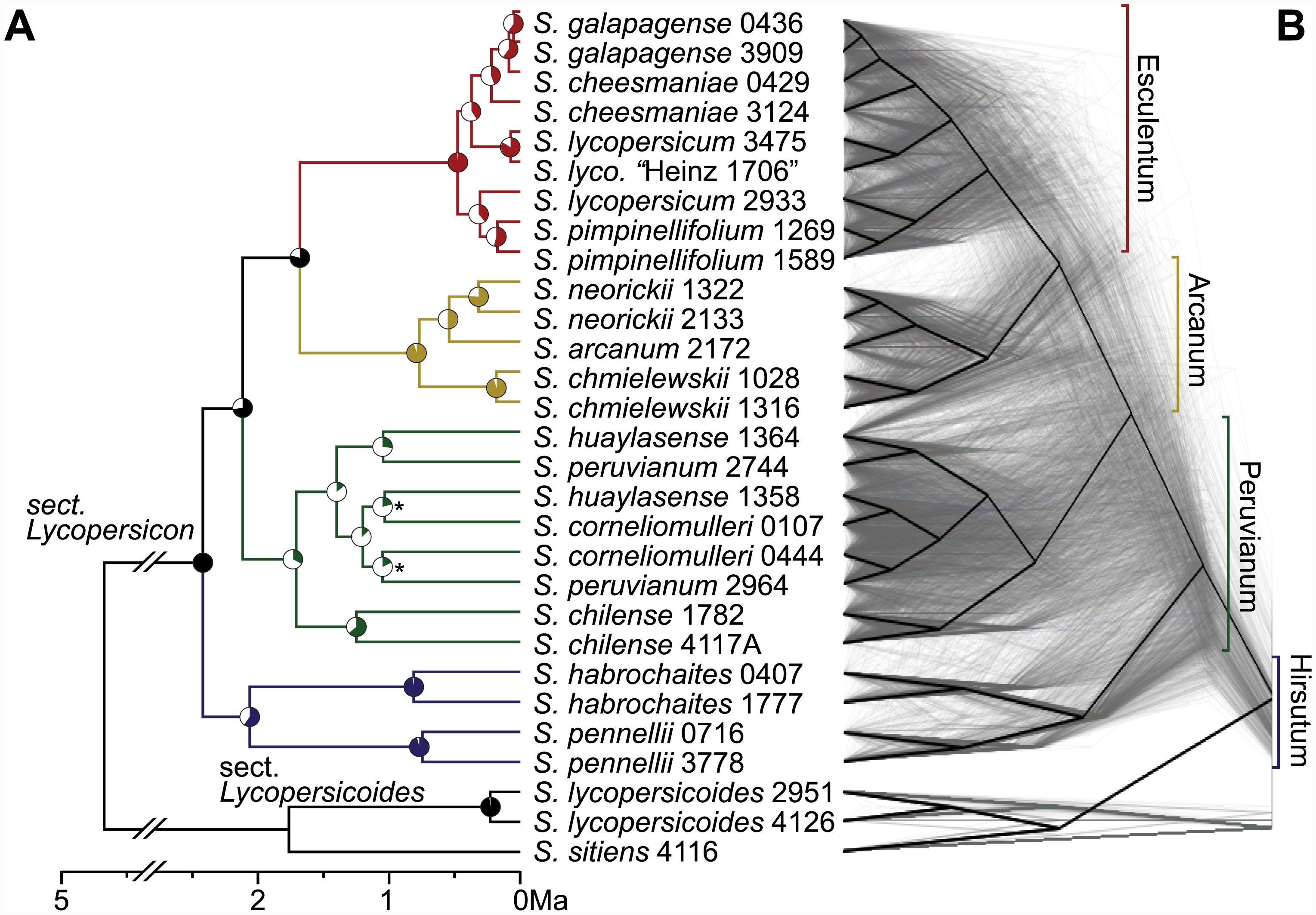Evolution
Wild tomatoes evolved relatively recently. They all share a common ancestor less than 2.5 million years ago, which means that each of the current 13 species evolved, by the accumulation of genetic differences, within that time.
The relationships between species can be shown as a tree, where species separated by shorter branches are more closely related and species separated by long distances on the tree (many lengths of branch) are more distantly related, just as siblings are more closely related compared with second cousins that are more distant. Traditionally, the relationships between species have been inferred from patterns of shared physical traits between species. Among wild tomatoes, these traits might have included aspects of form (like the size and shape of floral characters), and reproductive behavior (like the ability to self-fertilize). Species that share more traits in common are considered more closely related, compared to species that have fewer traits in common.
Evolutionary tree of wild tomatoes
Rather than phenotypic traits, contemporary studies often use patterns of shared DNA variation to describe species relationships. The image below shows the relationships among all wild tomato species, based on information from about half of all of the known genes in each of these species (in this case, more than 16,500 genes; tomatoes each have about 34,000 genes in total.) On the left is a tree built from average species DNA differences from all these genes. On the right is a diagram that shows many individual trees built from smaller groups of these genes. They indicate that the evolutionary emergence of current wild species is recent and complex.
